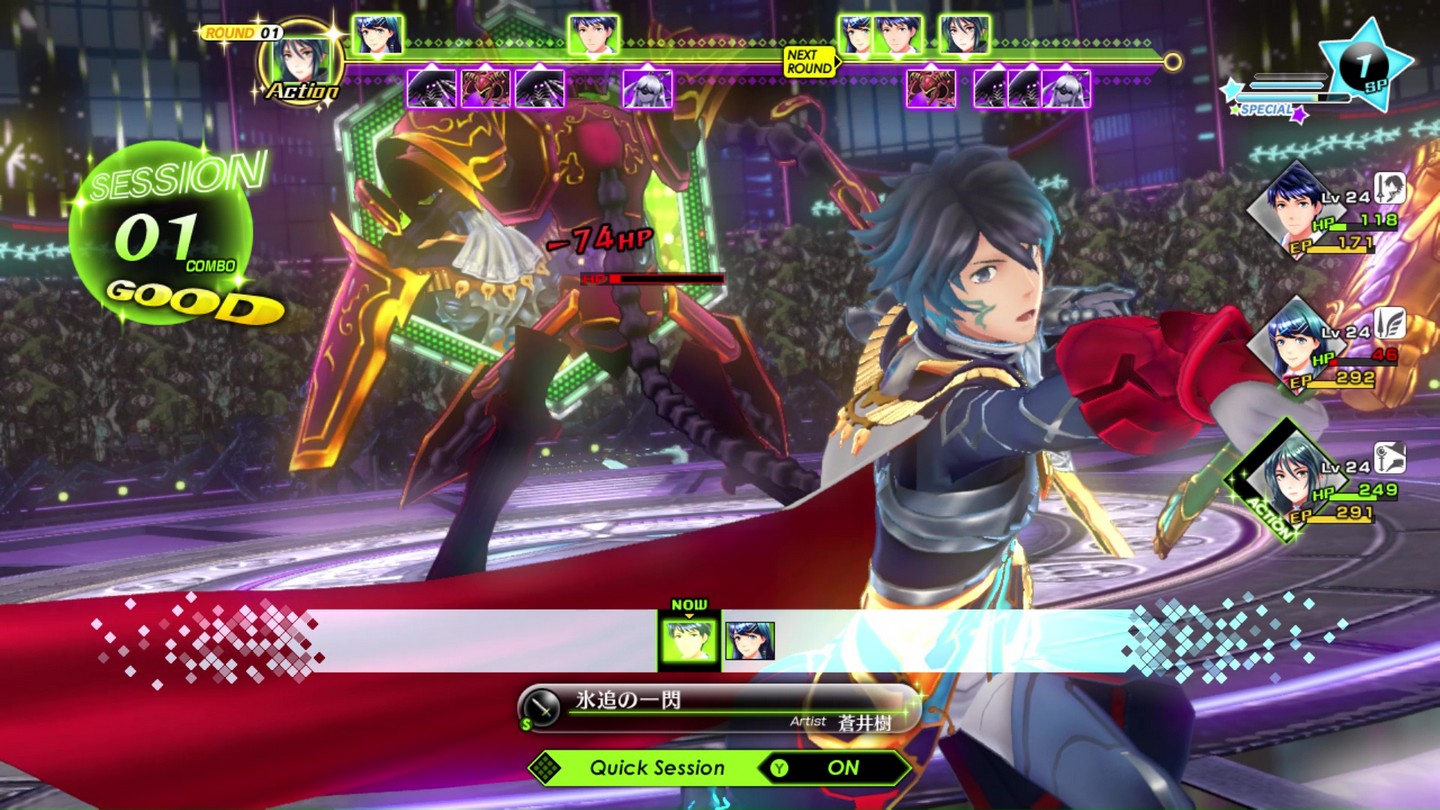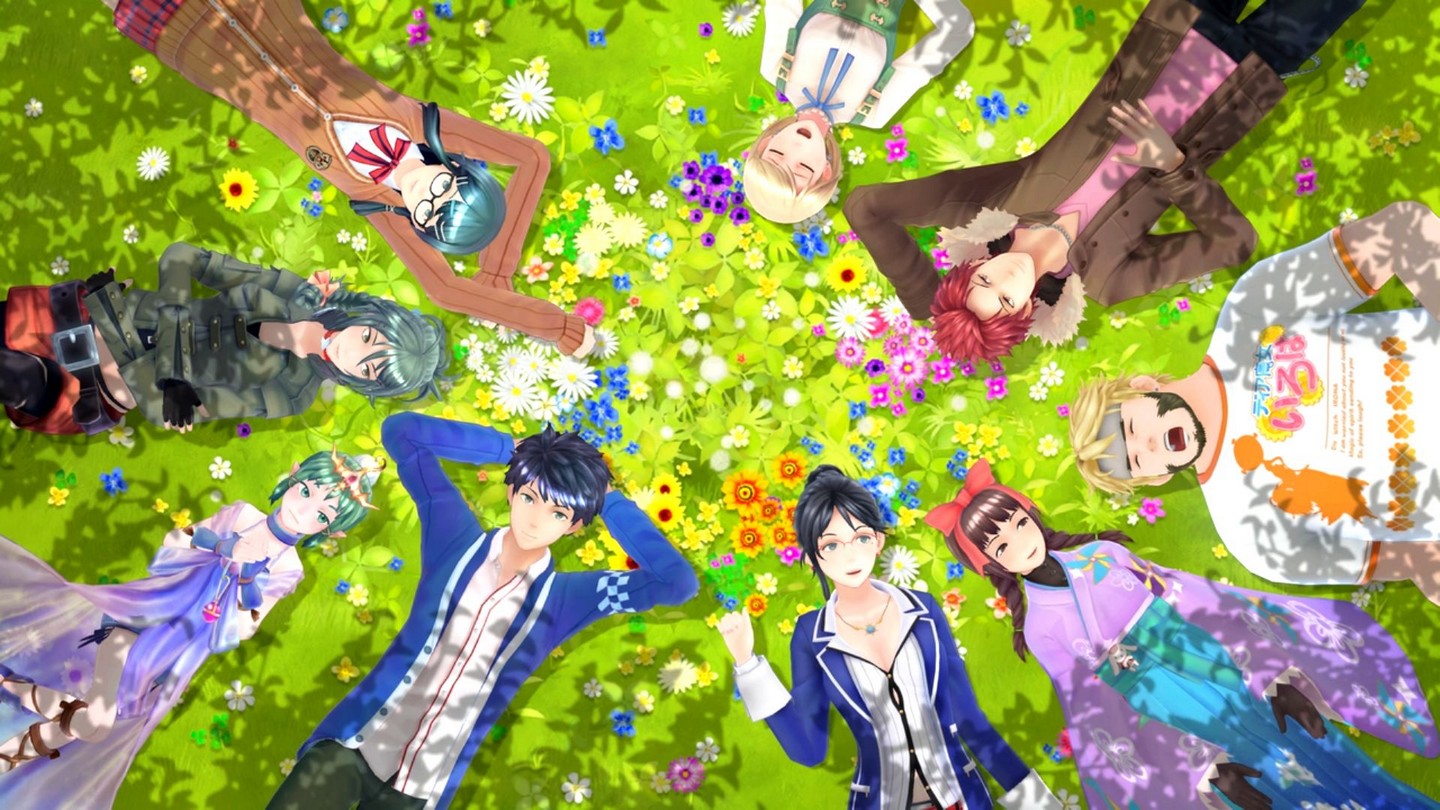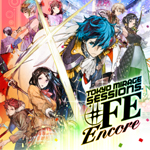A song in your Heart
Back in 2016, I had nothing by good things to say in my review of Tokyo Mirage Sessions. In fact, it held the top spot on my GOTY that December. However, having been released on an ailing platform, Nintendo’s Wii U, the game didn’t get the audience it truly deserved. Fast-Forward 4 years and TMS gets a second chance to impress a whole new group of people.
Taking place in downtown Tokyo, Tokyo Mirage Sessions #FE (Which I will call TMS from now on) tells the story of a group of plucky young adults who are thrust in to a battle between good and evil, one that threatens not only our world, but that of an alternative dimension. Mirages have been appearing from tears in our universe and attacking the people of Tokyo by sucking all of their spirit and enthusiasm. Caught in one of the attacks is Itsuki and Tsubasa, two friends who get dragged in to one of these tears, called an Idolasphere and are set upon. It is here that Itsuki awakens a power from within, one that attracts a Mirage called Chrom. Chrom is unlike the other Mirages and lends Itsuki his strength so that he can defeat the evil Mirages and escape. From there Itsuki discovers that the Mirages are targeting people from the entertainment business and joins up with a talent agency consisting of young singers and actors, who are also Mirage Masters, people who can summon Mirages to aid them, on the side in a bid to get to the bottom of these attacks and save Tokyo. Not only will Itsuki have to deal with demons, but also have support his friends the best he can, all whist learning the ropes of the Idol management business.

Platform: Nintendo Switch
Price: $59.99
Genre: JRPG
The premise may sound a little weird, but TMS leans in to it wholly and embraces its Anime inspirations. The entire main cast is voiced in Japanese and the animated cut-scenes are terrific, all adding to the experience. The cast is varied and charming, each with their own dreams, fears and aspirations; ones that they must rise up to in order to awaken all of the powers that reside within them. It is the interactions between the main cast that give that game its heart. None of characters are perfect and it is watching them overcome these imperfections through the course of the story that kept me hooked. I have no experience when to comes to Fire Emblem, so I had very little knowledge about Chrom, Cain, Draug or any of the other Mirages, but that made no difference to my enjoyment of the story. But I am sure it will please many Fire Emblem fans to see their favorite characters in a new setting.
But it is in the combat where a JRPG can live and die and thankfully the combat system is just as colorful as the game’s presentation. TMS’s action is turn-based, but unlike other JRPGs attacks can be chained between the three combatants. These are called sessions and can be made stronger as the cast unlock things called Performa. Throughout the story and during combat Performa can be earned and used to unlock special moves, abilities and new weapons. All of these are vital in opening up new session opportunities and linking up more combos. Basically, if a mirage is attacked with an element that it is weak to, it allows automated follow up attacks, these can result in a huge chain of attacks and can turn the tide of battle in an instant. As the game moves forward, it allows characters that aren’t involved in the battle to take part and even those that don’t actually fight can end up providing support for the team. Because the animation is so colorful and exciting these sessions never get old, but they can get long towards the end of the game, so the Encore version has included the ability to skip these sessions by pressing the Y button.
Along with the main story, each of the main cast has several side quests to undertake. These can be done in between the main story chapters, with no set time limit. This side quests are varied and while many include going back to previous Idolaspheres, there are some that simply require Itsuki to support his friends. Completing these quests will unlock special Performa to use and gain extra insight in to each of characters. The Idolaspheres also add a big part to the gameplay. Each of them has their own style, along with many puzzles to solve and mazes to navigate; it isn’t simply a case of following a set path from A to B and each Idolasphere can take a few hours to get through.

So what does this version of TMS have that the standard Wii U version doesn’t? First of all it includes the DLC from the original version. This takes the form of a dungeon that can be access in the Fortuna Agency office at any time and allows Itsuki and co. to gain extra experience and skills. However, I recommend entering this dungeon sparingly, as it can end up making the game to easy and less of a challenge. There is also a brand-new dungeon that can be accessed after a certain point in the story. This dungeon adds a little more flavor to some of the characters, but doesn’t really add up to too much. There are also a whole bunch of costumes to unlock, including one themed on Joker from Persona 5. These are cool, but again don’t add that much, especially as the original costume designs were awesome and I just ended up reverting back to those after a while. Finally, the game adds Tiki as a battle support character, who will join in on sessions to add some extra damage.
Time hasn’t aged this game one bit; I still found it as adorable as I did back in 2016. It is great that TMS is now available to a wider audience and hopefully will it get the sales it deserves. In my opinion it is not only the best JRPG on the Switch, but stands shoulder to shoulder with the best of all time.
Review copy of game provided by publisher.

